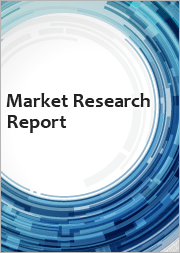
|
시장보고서
상품코드
1675446
세계의 에너지용 블록체인 시장 : 컴포넌트별, 유형별, 용도별, 최종사용자별, 지역별(2025-2033년)Blockchain in Energy Market Report by Component, Type, Application, End User, and Region 2025-2033 |
||||||
에너지용 블록체인 시장 세계 시장 규모는 2024년 17억 6,570만 달러에 달했습니다. 향후 IMARC Group은 이 시장이 2033년까지 252억 3,340만 달러에 달할 것으로 예상하며, 2025-2033년 32.66%의 연평균 성장률(CAGR)을 나타낼 것으로 전망하고 있습니다.
에너지용 블록체인은 에너지 유통을 가능하게 하고 발전 사업자와 소비자 간의 거래를 촉진하는 기술을 말합니다. 중앙 당국을 거치지 않고 디지털 거래와 자산을 안전하게 저장하는 분산형, 복제형, 공유형 원장을 포함합니다. 에너지용 블록체인은 과금, 자동화, 자원 공유, 거래, 스마트 계약, 디지털 ID 등에 널리 활용되고 있습니다. 또한 전력망, 정부 리스크 및 컴플라이언스, 공급망, 에너지 인증서 관리에도 활용되고 있습니다. 에너지용 블록체인은 가시성을 높이고, 업무 효율성을 높이며, 규제 당국에 대한 보고를 간소화합니다. 또한, 환경적 지속가능성을 제공하고, 비용을 절감하며, 신뢰를 높이고, 투명성을 높이고, 통제와 보안을 강화합니다.
에너지용 블록체인 시장 동향 :
에너지 분배를 위한 스마트 그리드 채택이 증가하고 있는 것은 시장 성장을 가속하는 주요 요인 중 하나입니다. 블록체인은 분산성, 투명성, 내결함성, 강력한 보안성으로 인해 기능 향상, 장애 방지, 프라이버시 보호, 스마트 계약을 통한 거래 관리를 위해 스마트 그리드에서 널리 사용되고 있습니다. 또한 데이터 관리, 추적성 제공, 자동 요금 부과, 부정 액세스 방지를 위한 스마트 미터기 설치가 증가하면서 블록체인 기술에 대한 수요가 증가하고 있는 것도 성장을 가속하는 요인으로 작용하고 있습니다. 또한, 재생 가능 에너지원의 채택이 증가함에 따라 유통을 관리하고 인증서를 통해 에너지원의 실시간 검증을 제공하기 위해 블록체인의 채택을 촉진하고 있으며, 이는 시장 성장을 가속하고 있습니다. 이와는 별도로 블록체인이 P2P 에너지 거래를 가능하게 하기 위해 널리 사용되고 있으며, 안전한 원장을 통해 사용자들끼리 직접 전력을 사고 팔 수 있게 된 것도 시장 성장에 긍정적인 영향을 미치고 있습니다. 또한, 프라이버시를 제공하고, 결제 지연을 줄이고, 기업 비밀을 보호하기 위해 석유 및 가스 산업에서 블록체인의 채택이 증가하고 있는 것도 시장 성장을 가속하고 있습니다. 이 외에도 분산형 에너지 시스템의 채택 증가, 절전을 촉진하는 다양한 정부 이니셔티브의 시행, 전기자동차(EV) 충전 및 에너지 공유에 대한 블록체인 채택 증가 등이 시장 성장을 가속할 것으로 예상됩니다.
본 보고서에서 다룬 주요 질문
- 세계 에너지용 블록체인 시장은 지금까지 어떻게 성장해왔고, 앞으로 어떻게 변화할 것인가?
- 코로나19는 세계 에너지 블록체인 시장에 어떤 영향을 미쳤는가?
- 주요 지역 시장은?
- 구성요소별 시장 분석은?
- 유형별 시장 분석은?
- 용도별 시장 분석은?
- 최종사용자별 시장 분석은?
- 산업 가치사슬의 다양한 단계는?
- 업계의 주요 촉진요인과 과제는?
- 세계 에너지 블록체인 시장의 구조와 주요 기업은?
- 업계 경쟁은 어느 정도인가?
목차
제1장 서문
제2장 조사 범위와 조사 방법
- 조사 목적
- 이해관계자
- 데이터 소스
- 1차 정보
- 2차 정보
- 시장 추정
- 보텀업 접근
- 톱다운 접근
- 조사 방법
제3장 주요 요약
제4장 서론
- 개요
- 주요 업계 동향
제5장 세계의 에너지용 블록체인 시장
- 시장 개요
- 시장 실적
- COVID-19의 영향
- 시장 예측
제6장 시장 분석 : 컴포넌트별
- 플랫폼
- 서비스
제7장 시장 분석 : 유형별
- 프라이빗
- 퍼블릭
제8장 시장 분석 : 용도별
- P2P 트랜잭션
- 그리드 트랜잭션
- 에너지 파이낸싱
- 전기자동차
- 지속가능성 어트리뷰션
- 기타
제9장 시장 분석 : 최종사용자별
- 전력
- 석유 및 가스
제10장 시장 분석 : 지역별
- 북미
- 미국
- 캐나다
- 아시아태평양
- 중국
- 일본
- 인도
- 한국
- 호주
- 인도네시아
- 기타
- 유럽
- 독일
- 프랑스
- 영국
- 이탈리아
- 스페인
- 러시아
- 기타
- 라틴아메리카
- 브라질
- 멕시코
- 기타
- 중동 및 아프리카
- 시장 내역 : 국가별
제11장 SWOT 분석
- 개요
- 강점
- 약점
- 기회
- 위협
제12장 밸류체인 분석
제13장 Porter의 Five Forces 분석
- 개요
- 바이어의 교섭력
- 공급 기업의 교섭력
- 경쟁 정도
- 신규 진출업체의 위협
- 대체품의 위협
제14장 가격 분석
제15장 경쟁 구도
- 시장 구조
- 주요 기업
- 주요 기업 개요
- ConsenSys
- Energy Web
- Greeneum
- International Business Machines Corporation
- Ondiflo
- Power Ledger Pty Ltd
The global blockchain in energy market size reached USD 1,765.7 Million in 2024. Looking forward, IMARC Group expects the market to reach USD 25,233.4 Million by 2033, exhibiting a growth rate (CAGR) of 32.66% during 2025-2033.
Blockchain in energy refers to a technology that enables energy distribution and facilitates transactions between generators and consumers. It includes distributed, replicated, and shared ledgers that securely store digital transactions and assets without using a central authority. Blockchain in energy is widely used for billing, automation, sharing resources, trading, smart contracts, and digital identity. It is also used to manage grids, government risk and compliance, supply chain, and energy certificates. Blockchain in energy improves visibility, increases operating efficiencies, and streamlines regulatory reporting. It also offers environmental sustainability, reduces costs, improves trust, increases transparency, and provides enhanced control and security.
Blockchain in Energy Market Trends:
The rising adoption of smart grids for energy distribution is one of the primary factors driving the market growth. Blockchain is widely used in smart grids to improve functionality, prevent failure, protect privacy, and manage transactions through smart contracts due to its decentralization, transparency, fault tolerance, and strong security. In addition, increasing demand for blockchain technology due to the rising installation of smart meters to manage data, offer traceability, enable automated billing, and prevent unauthorized access is acting as another growth-inducing factor. Furthermore, the rising adoption of renewable energy sources is facilitating the employment of blockchain to manage distribution and provide real-time validation of the energy source through certificates, which, in turn, is impelling the market growth. Apart from this, the widespread utilization of blockchain to enable peer-to-peer energy trading, allowing users to buy and sell power directly amongst each other through a secure ledger, is positively influencing the market growth. Moreover, the increasing adoption of blockchain in the oil and gas industry to provide privacy, reduce settlement delays, and protect trade secrets is propelling the market growth. Other factors, including the rising adoption of distributed energy systems, implementation of various government initiatives promoting electricity saving, and increasing adoption of blockchain for electric vehicle (EV) charging and energy sharing, are anticipated to drive market growth.
Key Market Segmentation:
Breakup by Component:
- Platform
- Services
Breakup by Type:
- Private
- Public
Breakup by Application:
- Peer-To-Peer Transaction
- Grid Transactions
- Energy Financing
- Electric Vehicle
- Sustainability Attribution
- Others
Breakup by End User:
- Power
- Oil and Gas
Breakup by Region:
- North America
- United States
- Canada
- Asia-Pacific
- China
- Japan
- India
- South Korea
- Australia
- Indonesia
- Others
- Europe
- Germany
- France
- United Kingdom
- Italy
- Spain
- Russia
- Others
- Latin America
- Brazil
- Mexico
- Others
- Middle East and Africa
Competitive Landscape:
The competitive landscape of the industry has also been examined along with the profiles of the key players being ConsenSys, Energy Web, Greeneum, International Business Machines Corporation, Ondiflo and Power Ledger Pty Ltd.
Key Questions Answered in This Report:
- How has the global blockchain in energy market performed so far and how will it perform in the coming years?
- What has been the impact of COVID-19 on the global blockchain in energy market?
- What are the key regional markets?
- What is the breakup of the market based on the component?
- What is the breakup of the market based on the type?
- What is the breakup of the market based on the application?
- What is the breakup of the market based on the end user?
- What are the various stages in the value chain of the industry?
- What are the key driving factors and challenges in the industry?
- What is the structure of the global blockchain in energy market and who are the key players?
- What is the degree of competition in the industry?
Table of Contents
1 Preface
2 Scope and Methodology
- 2.1 Objectives of the Study
- 2.2 Stakeholders
- 2.3 Data Sources
- 2.3.1 Primary Sources
- 2.3.2 Secondary Sources
- 2.4 Market Estimation
- 2.4.1 Bottom-Up Approach
- 2.4.2 Top-Down Approach
- 2.5 Forecasting Methodology
3 Executive Summary
4 Introduction
- 4.1 Overview
- 4.2 Key Industry Trends
5 Global Blockchain in Energy Market
- 5.1 Market Overview
- 5.2 Market Performance
- 5.3 Impact of COVID-19
- 5.4 Market Forecast
6 Market Breakup by Component
- 6.1 Platform
- 6.1.1 Market Trends
- 6.1.2 Market Forecast
- 6.2 Services
- 6.2.1 Market Trends
- 6.2.2 Market Forecast
7 Market Breakup by Type
- 7.1 Private
- 7.1.1 Market Trends
- 7.1.2 Market Forecast
- 7.2 Public
- 7.2.1 Market Trends
- 7.2.2 Market Forecast
8 Market Breakup by Application
- 8.1 Peer-To-Peer Transaction
- 8.1.1 Market Trends
- 8.1.2 Market Forecast
- 8.2 Grid Transactions
- 8.2.1 Market Trends
- 8.2.2 Market Forecast
- 8.3 Energy Financing
- 8.3.1 Market Trends
- 8.3.2 Market Forecast
- 8.4 Electric Vehicle
- 8.4.1 Market Trends
- 8.4.2 Market Forecast
- 8.5 Sustainability Attribution
- 8.5.1 Market Trends
- 8.5.2 Market Forecast
- 8.6 Others
- 8.6.1 Market Trends
- 8.6.2 Market Forecast
9 Market Breakup by End User
- 9.1 Power
- 9.1.1 Market Trends
- 9.1.2 Market Forecast
- 9.2 Oil and Gas
- 9.2.1 Market Trends
- 9.2.2 Market Forecast
10 Market Breakup by Region
- 10.1 North America
- 10.1.1 United States
- 10.1.1.1 Market Trends
- 10.1.1.2 Market Forecast
- 10.1.2 Canada
- 10.1.2.1 Market Trends
- 10.1.2.2 Market Forecast
- 10.1.1 United States
- 10.2 Asia-Pacific
- 10.2.1 China
- 10.2.1.1 Market Trends
- 10.2.1.2 Market Forecast
- 10.2.2 Japan
- 10.2.2.1 Market Trends
- 10.2.2.2 Market Forecast
- 10.2.3 India
- 10.2.3.1 Market Trends
- 10.2.3.2 Market Forecast
- 10.2.4 South Korea
- 10.2.4.1 Market Trends
- 10.2.4.2 Market Forecast
- 10.2.5 Australia
- 10.2.5.1 Market Trends
- 10.2.5.2 Market Forecast
- 10.2.6 Indonesia
- 10.2.6.1 Market Trends
- 10.2.6.2 Market Forecast
- 10.2.7 Others
- 10.2.7.1 Market Trends
- 10.2.7.2 Market Forecast
- 10.2.1 China
- 10.3 Europe
- 10.3.1 Germany
- 10.3.1.1 Market Trends
- 10.3.1.2 Market Forecast
- 10.3.2 France
- 10.3.2.1 Market Trends
- 10.3.2.2 Market Forecast
- 10.3.3 United Kingdom
- 10.3.3.1 Market Trends
- 10.3.3.2 Market Forecast
- 10.3.4 Italy
- 10.3.4.1 Market Trends
- 10.3.4.2 Market Forecast
- 10.3.5 Spain
- 10.3.5.1 Market Trends
- 10.3.5.2 Market Forecast
- 10.3.6 Russia
- 10.3.6.1 Market Trends
- 10.3.6.2 Market Forecast
- 10.3.7 Others
- 10.3.7.1 Market Trends
- 10.3.7.2 Market Forecast
- 10.3.1 Germany
- 10.4 Latin America
- 10.4.1 Brazil
- 10.4.1.1 Market Trends
- 10.4.1.2 Market Forecast
- 10.4.2 Mexico
- 10.4.2.1 Market Trends
- 10.4.2.2 Market Forecast
- 10.4.3 Others
- 10.4.3.1 Market Trends
- 10.4.3.2 Market Forecast
- 10.4.1 Brazil
- 10.5 Middle East and Africa
- 10.5.1 Market Trends
- 10.5.2 Market Breakup by Country
- 10.5.3 Market Forecast
11 SWOT Analysis
- 11.1 Overview
- 11.2 Strengths
- 11.3 Weaknesses
- 11.4 Opportunities
- 11.5 Threats
12 Value Chain Analysis
13 Porters Five Forces Analysis
- 13.1 Overview
- 13.2 Bargaining Power of Buyers
- 13.3 Bargaining Power of Suppliers
- 13.4 Degree of Competition
- 13.5 Threat of New Entrants
- 13.6 Threat of Substitutes
14 Price Analysis
15 Competitive Landscape
- 15.1 Market Structure
- 15.2 Key Players
- 15.3 Profiles of Key Players
- 15.3.1 ConsenSys
- 15.3.1.1 Company Overview
- 15.3.1.2 Product Portfolio
- 15.3.2 Energy Web
- 15.3.2.1 Company Overview
- 15.3.2.2 Product Portfolio
- 15.3.3 Greeneum
- 15.3.3.1 Company Overview
- 15.3.3.2 Product Portfolio
- 15.3.4 International Business Machines Corporation
- 15.3.4.1 Company Overview
- 15.3.4.2 Product Portfolio
- 15.3.4.3 Financials
- 15.3.4.4 SWOT Analysis
- 15.3.5 Ondiflo
- 15.3.5.1 Company Overview
- 15.3.5.2 Product Portfolio
- 15.3.6 Power Ledger Pty Ltd
- 15.3.6.1 Company Overview
- 15.3.6.2 Product Portfolio
- 15.3.1 ConsenSys
Kindly, note that this only represents a partial list of companies, and the complete list has been provided in the report



















